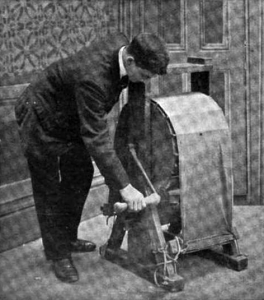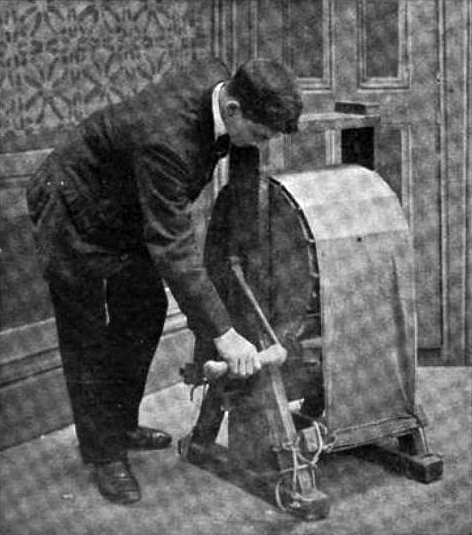The Property Man
Who Is Qualified to Become One?
By Ray Chrysler, Matter of Properties, Metro Pictures Corporation, 1922.
Picture a curiosity shop and you can visualize clearly the property room of a large studio. In it, one will find everything from a suit of armor to a canary bird’s nest. From it, several well-furnished homes or hotels could be outfitted. Complete with such appointments as fine linens and such accessories as art objects.
The term “prop” really covers everything. Sometimes it means a stable, another time a bull dog, a box of candy or an automobile, a work of art, of any of a million other things. In a motion picture studio, a “prop” means some object that is used in the making of the picture.
To qualify for fitness in being master of all this vast domain of materials, one must indeed have special training. The property man must be a very resourceful person, for it is up to him to know the location of any one of a thousand articles in his property room, and to be able to place his hand on almost anything that a director could call for in the work of filming a motion picture.
The property man has not as yet received his place in that limelight which seems to bathe all other studio executives. But when it is considered that a property man should have brains, initiative, and a good, retentive memory, it seems that he, too, is entitled to his share of glory. One thing is certain; he has a thousand times more worry and responsibility than his brother property man in the legitimate theatrical world.
It is from the ranks of the stage property men that many of the screen’s property men are recruited. Still there are amateurs as well who have essayed the role of property man and have made good. To become a successful property man one must believe nothing impossible. Should he receive an order to produce a set of furniture of the time of the discovery of America, he must know or find out just what style of furniture was popular in those days.
Once he ascertains just what would be proper, he attempts to locate it and if it is not to be found, he must produce it. So he prepares plans, and then turns them over to the studio carpenter shop, where the needed articles or pieces of furniture are manufactured.
On an average, the property man has about twenty-four hours’ notice of the various “props” that will be needed in a new production. Within that time two or two hundred pieces of furniture, a piano, a phonograph, a harp, a violin, twenty sets of curtains, half dozen rugs of various sizes or anything else imaginable must be in its proper place on the “set” where it is to be used. It is the duty of the Property Department to furnish all interior decorations that are not permanently attached to the walls of the Settings themselves.
To care for this conglomerate assemblage of things, there is a department head and a corps of prop boys. Every article that goes out of the prop room is checked—the name of the picture in which it is to be used, the number of the stage which it is to be set on, and the number of scenes in which it is to be photographed. This is done for two reasons: first, to keep track of the articles; and second, it is a distinctive object, so that it wll not be used conspicuously in another picture. You see it would be very poor business if a handsome hand-carved chest, which adorned a star’s New York apartment in one picture, were to be used in his Spanish castle in his next. People would say, “Well, they take their furniture right along with them, don’t they ?”
Many times articles of great value are used in pictures. These are sometimes rented from antique shops, or private collections. While they are in the studio they are in the care of the “prop” department, and checked out each day along with the rest of the studio props.
To illustrate the variety of props purchased or rented I might mention that Goldwyn recently rented a “freak” prop – a trained mocking bird for which they paid $5.00 a day (the wage of an extra man or woman).
Originally printed in Opportunities in the motion picture industry, and how to qualify for positions in its many branches; published by the Photoplay Research Society, 1922 (pp 83-84).


